2.1 The Detector’s Input Optics and its Directional Sensitivity
Basically, the design of a detector’s input optics is determined by its desired directional sensitivity, which in turn depends on the radiometric or photometric quantity to be measured:
-
The determination of a light source’s radiant and luminous flux requires constant directional sensitivity over the solid angle of 4π steradian or over the hemispherical solid angle of 2π steradian. This is achieved by using an integrating sphere where the light source is either placed inside the sphere or right at the sphere’s entrance port.
-
The determination of irradiance and illuminance requires a detector’s directional sensitivity proportional to the cosine of the angle of incidence. This can either be done using a flat field detector or the entrance port of an integrating sphere.
-
Radiant and luminous intensity
-
Radiance and luminance are quantities that are defined as a function of the solid angle. Thus, the detector’s field of view has to be limited to a small angle. This can be achieved by using baffles and/or lenses arranged in a tube.
The following sections give information on:
Integrating spheres used with integral detectors
In an ideal case, the inner surface of an integrating sphere is a perfect diffuse Lambertian reflector. The directional distribution of reflected radiation is therefore independent of the directional distribution of incident radiation, and no specular reflection occurs. Due to its geometry, an ideal integrating sphere is characterized by constant irradiance (or illuminance) over its entire inner surface. Furthermore, the level of this irradiance (illuminance solely depends on the total amount of radiant power (luminous flux) entering the sphere) is independent of its directional distribution.
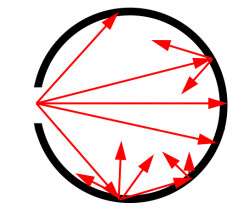
Fig. 1: Ideal multiple Lambertian reflections inside an integrating sphere
However, real surfaces do not show perfect Lambertian reflection properties. Although minimized by the properties of the respective material, a certain amount of specular reflection still occurs. Baffles placed at specific locations inside the sphere are used to prevent major measurement errors by specular reflection. Moreover, radiation is not reflected ideally at the input and exit ports due to the missing coating material. For these reasons, the quality of measurements performed using integrating spheres strongly depends on the sphere’s coating material as well as the exact position of baffles and the size of the ports in relation to the sphere’s diameter. As a general rule of thumb, the total area of entrance and exit ports should not exceed 5 % of the sphere’s internal surface. Numerous standard setups are used in radiometric and photometric measurements to define the arrangement of the sphere’s entrance ports, exit ports and internal baffles (see measurement of radiant power and luminous flux, irradiance and illuminance, radiant and luminous intensity, radiance and luminance and reflection and transmission properties below).
In addition to their directional sensitivity, integrating spheres also offer the following advantages:
-
The high number of internal reflections generally makes a detector insensitive to the incident radiation polarization.
-
For the characterization of powerful light sources, an integrating sphere can be used for attenuation in order to prevent saturation effects of the detector. Since this attenuation results in an increase of internal temperature, the maximum power of the light source is limited by the operation temperature range of the sphere.
-
In general, the geometric alignment of the source and integrating sphere is not very critical thus simplifying calibration and measurement procedures.
Click here for more detailed information about the theory and application of integrating spheres.
Measurement of radiant power and luminous flux
Radiant power and luminous flux of lasers and spot sources
Lasers, LEDs, spot lamps, endoscopes, optical fibers and other sources emit radiation with various directional distributions. As long the emission is limited to a hemispherical (2π steradian) solid angle, the source can be attached to the entrance window of an integrating sphere and therefore does not interfere with the sphere’s internal reflections.
The entrance port has to be large enough to ensure that all radiation from the source enters the sphere. A baffle is necessary to shield the detector from direct irradiation by the source.
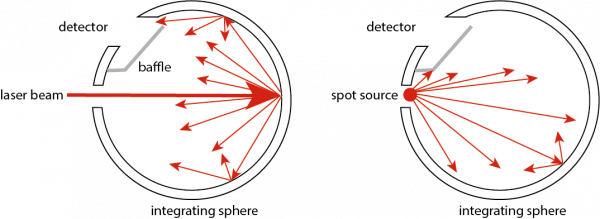
Fig. 2: Integrating sphere used for laser power measurements (left) and
radiant power and luminous flux measurements of spot sources (right).
As an alternative, radiant power and luminous flux of collimated (parallel) beams can be measured directly using flat field detectors as long as the detector’s active area is larger than the beam’s cross section. Despite the simple measurement setup, this method has significant disadvantages in comparison to the use of an integrating sphere:
- The detector might possibly be sensitive to the beam’s polarization.
- The detector’s active area might possibly be inhomogeneous in its sensitivity. In this case, it is important to ensure equal illumination during calibration and measurement.
- Alignment of the detector with respect to the beam is critical.
Radiant power and luminous flux of lamps
Lamps emit radiation in all directions of the full (4π steradian) solid angle. A lamp must therefore be placed inside an integrating sphere in order to determine its total radiant power or luminous flux. As a consequence, the lamp itself and its accessories interfere with the sphere’s internally reflected radiation thereby resulting in measurement errors. These errors are cancelled out by use of an auxiliary lamp (see below).
In order to reduce measurement uncertainty, integrating spheres used to measure the radiant power or luminous flux of lamps must be well suited for the lamp under test. One important design parameter is that the diameter of the hollow sphere should be about ten times (twice for tube lamps) the maximum dimension of the lamp. For example, an integrating sphere setup to measure the luminous flux of fluorescent lamps with 120 cm (47 in) length should have a diameter of at least 2 m (79 in). Furthermore, the diameter of the sphere limits the maximum power of the lamp.
In actual measurements, the lamp must be placed at the center of the hollow sphere. This is typically accomplished using a tube holder, which carries the power and measurement leads into the sphere. A socket at the end of the tube holds and connects the lamp. In order to hold the lamp at the central position, hinged integrating spheres that can be opened and that have large diameters of more than 50 cm (20 in) are used. Spheres with smaller diameters may offer a large diameter port to mount the lamp at the center of the sphere. The port is normally closed with a cap during the measurement. The inside surface of the cap should be coated with the same diffuse coating as the hollow sphere surface. The detector is placed at a port on the integrating sphere. It must be baffled against direct irradiation by the lamp.
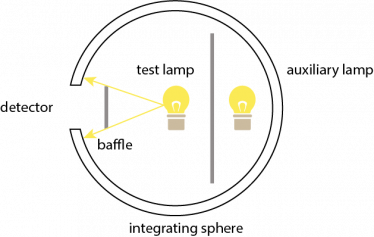
Fig. 3: Experimental setup for radiant power and luminous flux measurements of a lamp.
The auxiliary lamp is used to reduce measurement errors caused by the interference of
the lamp under test and its accessories with the sphere’s internally reflected radiation.
For precise measurements, the lamp must be aged before testing. The burn-in time depends on the lamp type. The burn-in time for tungsten lamps should be 2 – 5 hours (IEC 64) whereas about 100 hours (IEC 81) are recommended for arc lamps.
In precise luminous flux measurement applications, an auxiliary lamp with baffle(s) is recommended. The diffuse illumination generated by the auxiliary lamp can be used to reduce the negative effects of the lamp under test and its accessories according to the relation
ΦX = ΦN × YX × YHN YN YHX
ΦX: luminous flux of the test lamp
ΦN: luminous flux of the calibration lamp
YX: measurement signal of the test lamp (with auxiliary lamp switched off)
YN: measurement signal of the calibration lamp (with auxiliary lamp switched off)
YHN: measurement signal of the auxiliary lamp (with calibration lamp switched off)
YHX: measurement signal of the auxiliary lamp (with test lamp switched off)
Measurement of irradiance and illuminance
According to Equ. 3 in Basic radiometric quantities, a detector for measuring the irradiance or illuminance of a surface has to weight the incident radiation with respect to the cosine of its angle of incidence. This can either be achieved using
- an integrating sphere that is specially designed for irradiance (or illuminance) measurements (see figure below) or
- a cosine diffuser. This is an optical element that shows purely diffuse transmission regardless of the directional distribution of the incident radiation (Fig. 5).
In both cases, the ideal directional cosine response can only be approximated. Deviations of a real detector’s directional response from the ideal cosine response are quantified by the detector’s cosine error function , which is given by
cosine error (ϑ) = [ S(ϑ) / S(0) ] - cos(ϑ) = S(ϑ) - S(0) cos(ϑ) cos(ϑ) S(0) cos(ϑ)
In this equation, S(Θ) denotes the detector's signal caused by a ray of light impinging upon the detector's entrance optics at an angle Θ, measured relative to the normal (see Fig. 4).
S(0) denotes the detector's signal caused by the same ray of light impinging vertically upon the detector's entrance optics.
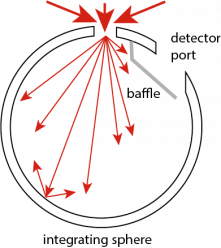
Fig. 4: Integrating sphere design for measurement of irradiance or illuminance of a horizontal surface.
The baffle prevents direct illumination of the detector, and the knife edges at the sphere’s entrance port
prevent shading by the sphere’s wall, which would distort the detector’s cosine response.
| Light Source | Approximate Average Illuminance (lx) |
| Overcast night | 0.0001 |
| Full moon | 0.1 |
| Office light | 500 |
| Clear bright sky | 70000 – 85000 |
Tab. 1: Some average illuminance values

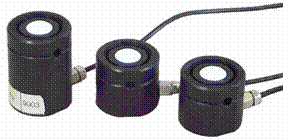
Fig. 5: 1st image: Irradiance detector heads with cosine diffuser and
2nd – 4th image: waterproof version for underwater and outdoor use
Measurement of radiant and luminous intensity
Radiant and luminous intensity describe the directional distribution of a source’s emitted radiation. For determination of this directional distribution, the relative position between source and detector has to be varied. The goniophotometer is a mechanical setup allowing the variation of the source’s orientation and/or the detector’s position, whereby the distance between source and detector is kept constant. Since the directional characteristics of a source often depend on its internal temperature distribution and thus on its position relative to the vertical, rotating the source around the horizontal axis is not recommended in order to ensure accurate measurements of radiant and luminous intensity.
Because radiant and luminous intensity are defined by the surface integral of the radiance and luminance (see Equ. 4), the emitting source must completely be in the detector’s field of view. Ideally, both quantities have to be determined with a setup that allows the source to be considered point like. As a crude rule of thumb, the distance between detector and source should be at least ten times the largest geometric dimension of the source.
For precise measurements, special care has to be taken to minimize reflections at the lamp’s surrounding (walls, ceiling, the goniophotometer itself) in the direction of the detector. Blackening of the surrounding, use of additional baffles and the reduction of the detector’s field of view are proper precautions.
Measurement of radiance and luminance
Radiance and luminance describe the directional distribution of the radiance emitted or reflected by a certain area element. Similar to radiant and luminous intensity, radiance and luminance can be determined using a goniophotometer, but the detector is placed much closer to the emitting or reflecting surface and the detector’s field of view is limited to a few degrees. Thus, only radiation from a small part of the source’s surface enters the detector.
| Light Source | Approximate Average Illuminance (lx) |
| Self-luminous paints | 0.02 10-3 |
| Candle flame | 1 |
| Computer screen | 100 |
| Overcast daytime sky | 1000 |
| Clear bright sky | 5000 – 6000 |
Tab. 2: Some average luminance values
Measurement of reflection and transmission properties
Quantities such as reflectance and transmittance are used to describe the optical properties of materials (see Reflection, Transmission and Absorption).
Reflectance ρ
Reflectance ρ (for incident radiation of given spectral composition, polarization and geometrical distribution) is the ratio of the reflected radiant or luminous flux to the incident flux in the given conditions. The measurement of reflectance is made in comparison to a reflection standard (reflectance ρN) with a collimated or conical radiation beam.
The signals of the detector will be calculated as follow:
ρ = I (X) - I (stray) × ρN I (N) - I (stray)
I (X): signal with sample irradiation
I (N): signal with standard irradiation
I (stray): signal with open measurement port
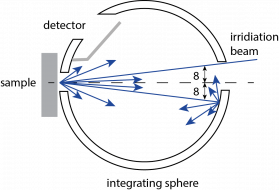
Fig. 6: Integrating Sphere Total Reflection Measurement Setup
Diffuse Reflectance ρd
This is the ratio of the diffusely reflected part of the (whole) reflected flux to the incident flux. The measurement of diffuse reflectance is made in comparison to a reflection standard (reflectance N) with a collimated or conical radiation beam. The signals of the detector are calculated as follows:
ρd = I (X) - I (stray) - ρ [ I (mi) - I (stray) ] × ρN I (N) - I (stray) - ρN [ I (mi) - I (stray) ]
I (X): signal with sample irradiation
I (N): signal with standard irradiation
I (stray): signal with open measurement port
I (mi): signal with irradiance of a mirror
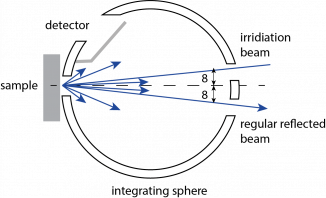
Fig. 7: Integrating sphere diffuse reflectance measurement setup
Transmittance τ
Transmittance τ (for incident radiation of given spectral composition, polarization and geometrical distribution) is the ratio of the transmitted radiant or luminous flux to the incident flux in the given conditions. The measurement of transmittance is made with a collimated or conical radiation beam. The signals of the detector are calculated as follows:
τ = I (X) I (open)
I (X): signal with sample irradiation
I (open): signal with open measurement port
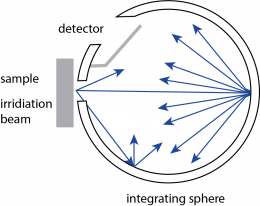
Fig. 8: Integrating sphere total transmittance measurement setup
Diffuse Transmittance τd
This is the ratio of the diffusely transmitted part of the (whole) transmitted flux to the incident flux.
The measurement of transmittance is made with a collimated or conical radiation beam. The signals of the detector are calculated as follow:
τd = I (X) - τI (stray) I (open) - I (stray)
I (X): signal with sample irradiation
I (open): signal with open measurement port and close output port
I (stray): signal with open measurement port and open output port
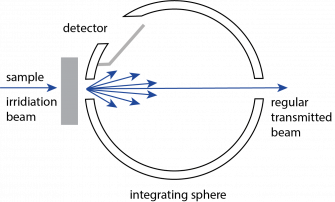
Fig. 9: Integrating sphere diffuse transmittance measurement setup
Measurement of flicker
New developments in solid state lighting (SSL) have enabled many new applications and products in the lighting industry. For instance, light sources using LEDs with pulse width modulation (PWM) or more advanced concepts can be dimmed and their colors changed. All these new functions are associated with often complex electronic control concepts. These electronic components can also contain high frequency components that may cause flicker in addition to typical low frequency oscillations. Several concepts have been developed in order to be able to examine and characterize these light sources. These include flicker frequency, flicker index and flicker percentage. As a result of these parameters, light sources can be compared with each other and optimized. This in turn results in new metrological tasks.
Flicker Frequency
The flicker frequency is defined as the reciprocal value of the cycle period T of the flicker oscillations.
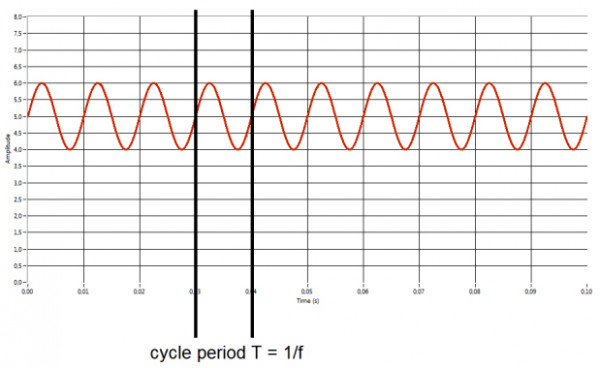
Fig. 10: Description of flicker frequency
Flicker percentage
The specification of the flicker percentage has proven to be highly meaningful. It indicates the magnitude (relative to the amplitude) of the waveform. The value lies between 0 and 1 or 0 % and 100 % respectively. 0 % signifies a pure DC waveform and 100 % a pure AC waveform. This value has no implications on the duty cycle of the signal. The flicker percentage of a signal f is defined as:
Percent Flicker = 100 % × fmax - fmin fmax + fmin
where fmax is the maximum functional value of f and fmin is the minimum functional value. Figure 11 shows the graphical representation of the flicker percent computation:
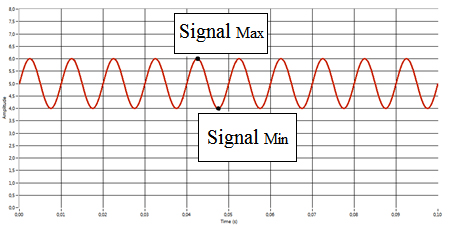
Fig. 11: Description of Percent Flicker
Flicker Index
Besides percent flicker, the flicker index is also very significant. It indicates the ratio of the area above the average light level and below the measured signal (Area 1, green) to the area below the average light level and the signal (Area 2, blue).The average light level is depicted in Figure 12 by the thick black line. A flicker index of 0 corresponds to a pure DC curve and a value of 1 corresponds to a pure AC curve. This factor specifies the duty cycle of the signal.
Flicker Index = Area 1 Area 1 + Area 2
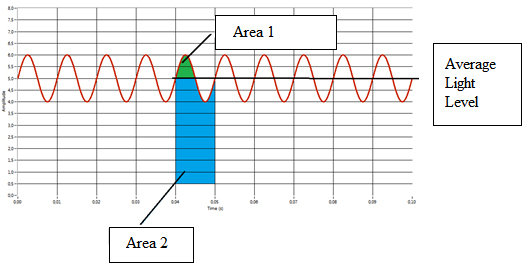
Fig. 12: Description of the flicker index